Alpona is a folk art which subtly evokes a prayer for our well-being. Practiced mainly by rural and partly urban women of Bengal it is done in a rich assortment of ornamental line drawings on the floors of home and temple. Integrated with Indian cultural heritage, it is drawn on auspicious days of pujas, marriages and ceremonies of “Brata” across caste since time immemorial. Brata is defined as special prayers and pujas in tandem with rituals for well-being of family and also attainment of piety.
Marked by a unique combination of disciplined and fluid white lines it emanates from a paste of water and grinded powder of atap chal (unprocessed sundried paddy). The lines are drawn with a small soft cotton bundle instead of a brush. The art represents diverse motifs and symbols that convey interesting connotations. It is primarily a Hindu religious art replete with elements of folklore. Its origin is unknown, yet one may discover its roots in a number of sources including cave painting which might have inspired the early practitioners of the art. An ancient art form, alpona has aesthetics of its own—unique in nature. Through different motifs like paddy bunches, various shapes of leaves, fish, bird, lotus, sometimes in geometric formations, and images of goddess Lakshmi’s owl, it also reveals the individual and independent marks of different castes in Bengal.

Carving a niche for himself in this domain of women is emerging alpona artist Rabi Biswas. Born in a village of the Nadia district of West Bengal, Biswas grew up in a milieu of the now elusive rural life which epitomized the simplistic way of living with all the traditional cultural traits. It was through his grandmother Sumitra Mondal , herself a gifted alpona artist, that he embraced and immersed himself in the world of various bratas like “Lakshmi Brata”, “Puniyepukut Brata”, etcetera and chose to emulate his grandmother. He worked hard to develop his skills in drawing his favorite motifs like lotus, conch, fish, sun, tree and cowshed.
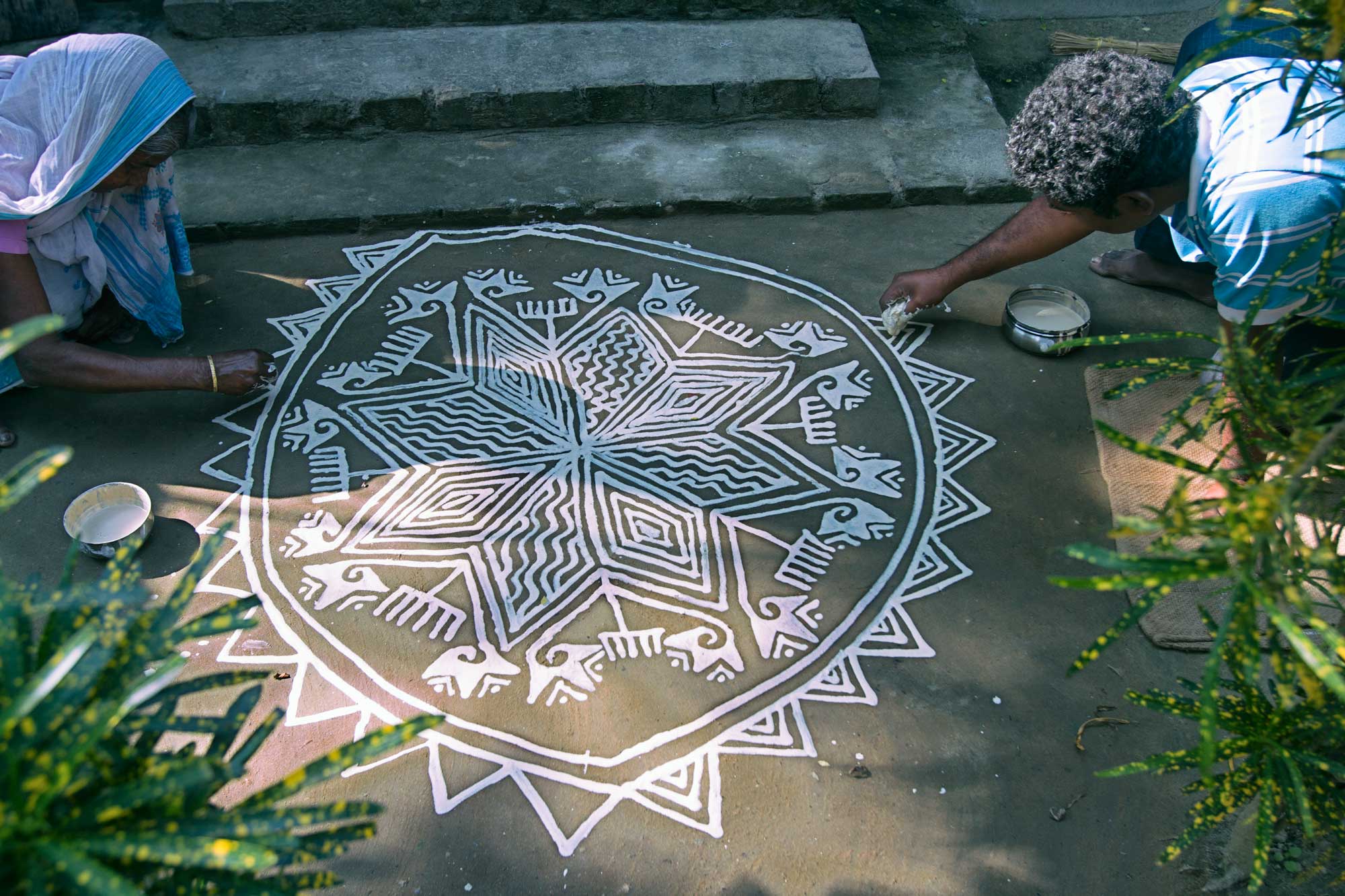
What attracted Biswas most was Sumitra’s felicity in drawing the lucid way of expressing visually her benign thoughts to address divinity with feminine touches. The partition of India had forced Sumitra to quit her motherland and settled in Nadia as a refugee. But the art and culture she was entwined with crossed over with her and manifested itself in the new milieu. Mentored from young age by his grandmother, Biswas gradually proved himself a competent artist. Then he began studying under his folk culture researcher uncle Bidhan Biswas to tie up the loose ends of his art and strive to propel it to a new high. Rabi visited more than 100 villages in Bengal to collect an array of motifs. That widened his world and kindled his imagination. He realized alpona done by artists belonging to different castes has different styles but as a whole it propagates inclusiveness in a society still not unaffected by castism.
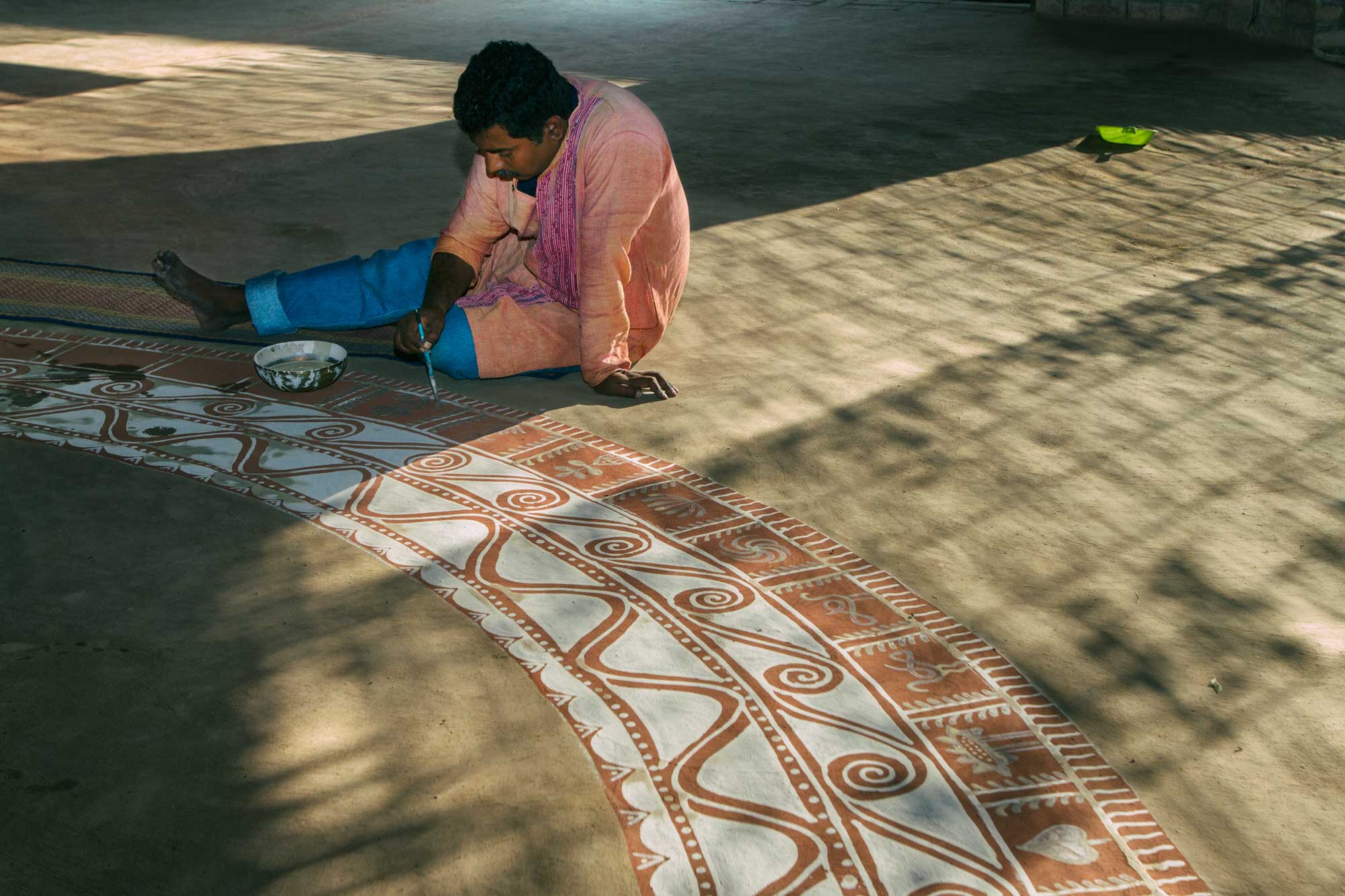
Later, his acquaintance with Parbati Bayul, a renowned Baul singer, marked the beginning of a fruitful period. On his first overseas tour of Paris, Hungary and Australia, he accompanied Parbati and there he did mural sized alpona (52 feet in width) covering the entire stage while Parbati sang. However, on return home, Biswas realized there was little feasibility of making a living from his alpona works. So he decided to make greetings cards with alpona and sold them in village fairs and markets. Then going one step farther, he succeeded in convincing the organizers to employ him to design fair gates and stalls with alpona.
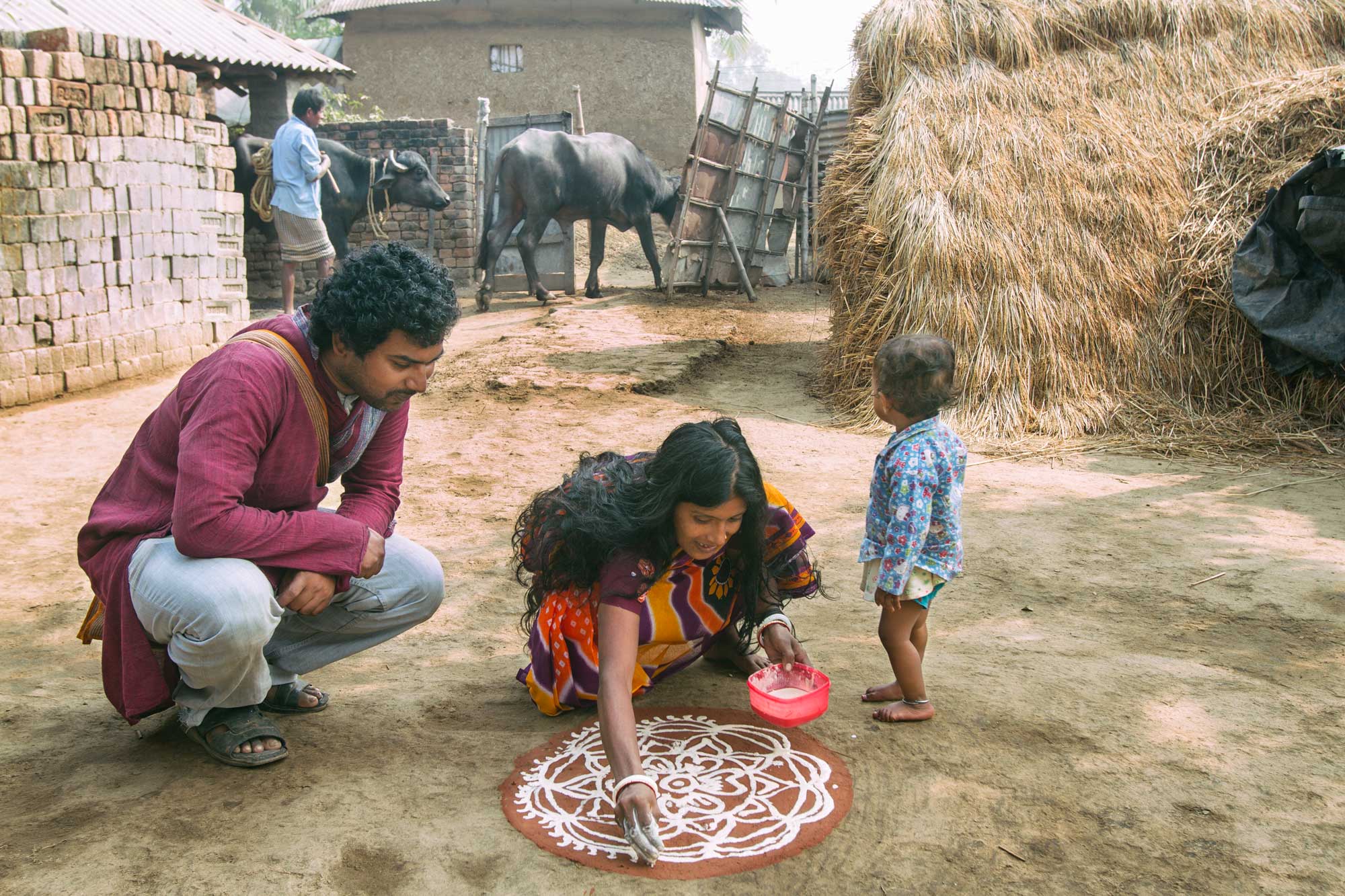
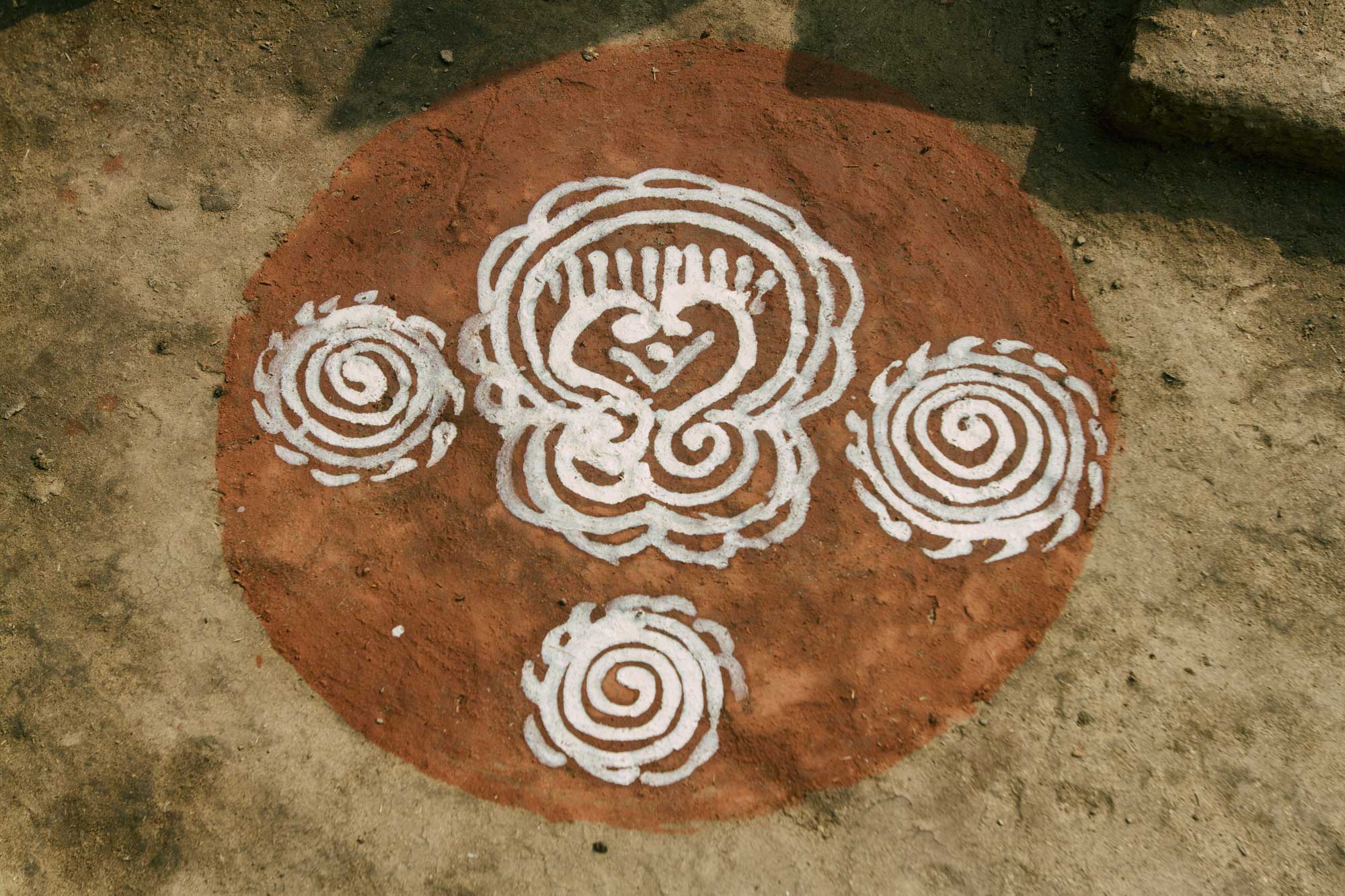
With the passage of time, things have changed drastically in rural Bengal. Alpona has begun falling from the favor of rural women as they are now much more involved with revenue generating urban centric works. In the face of vicissitudes of time, Biswas, now 35, is still as strongly committed as before, to his art. In his missionary zeal he works his heart out trying to keep the alpona art alive and kicking.
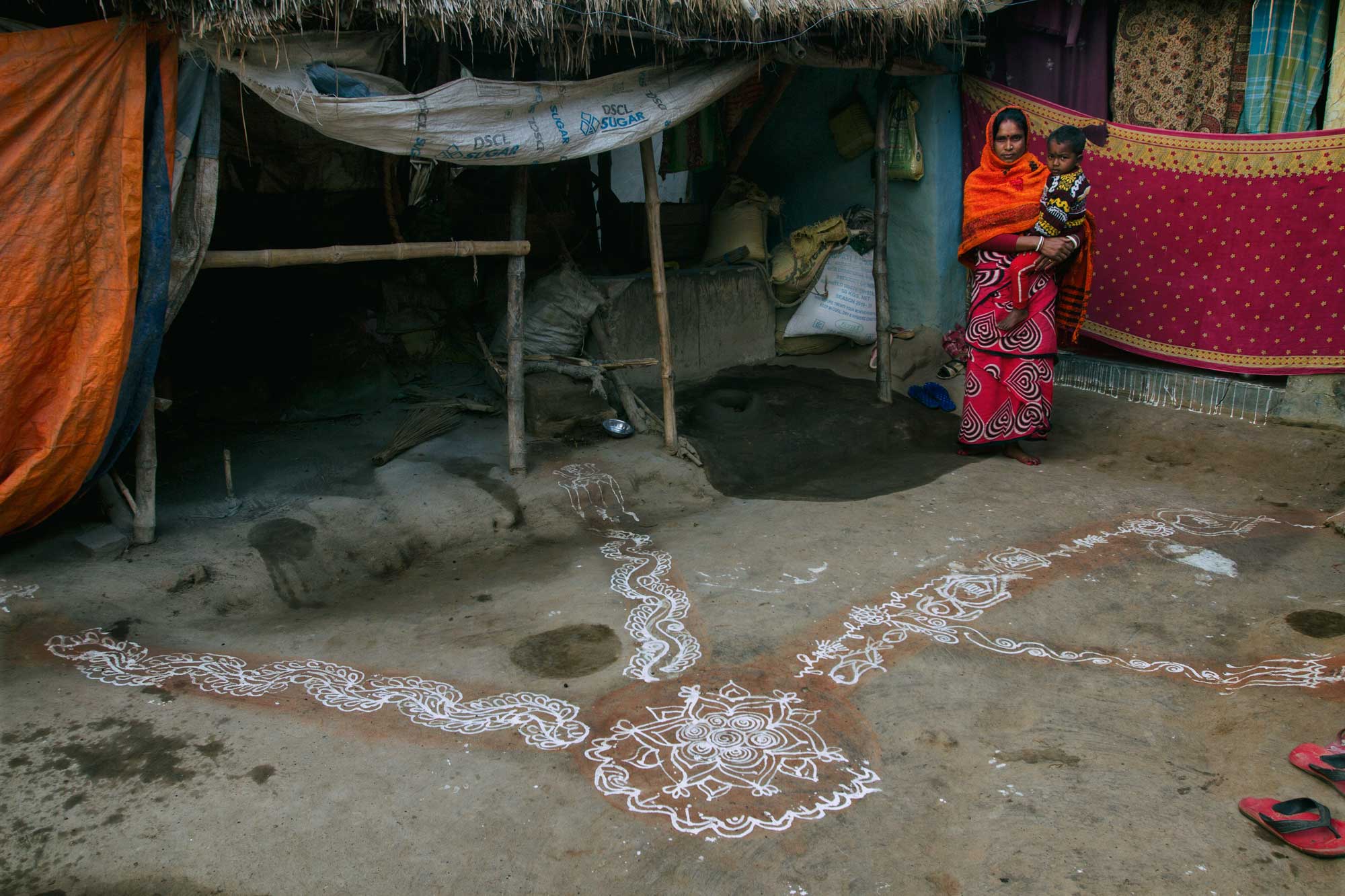
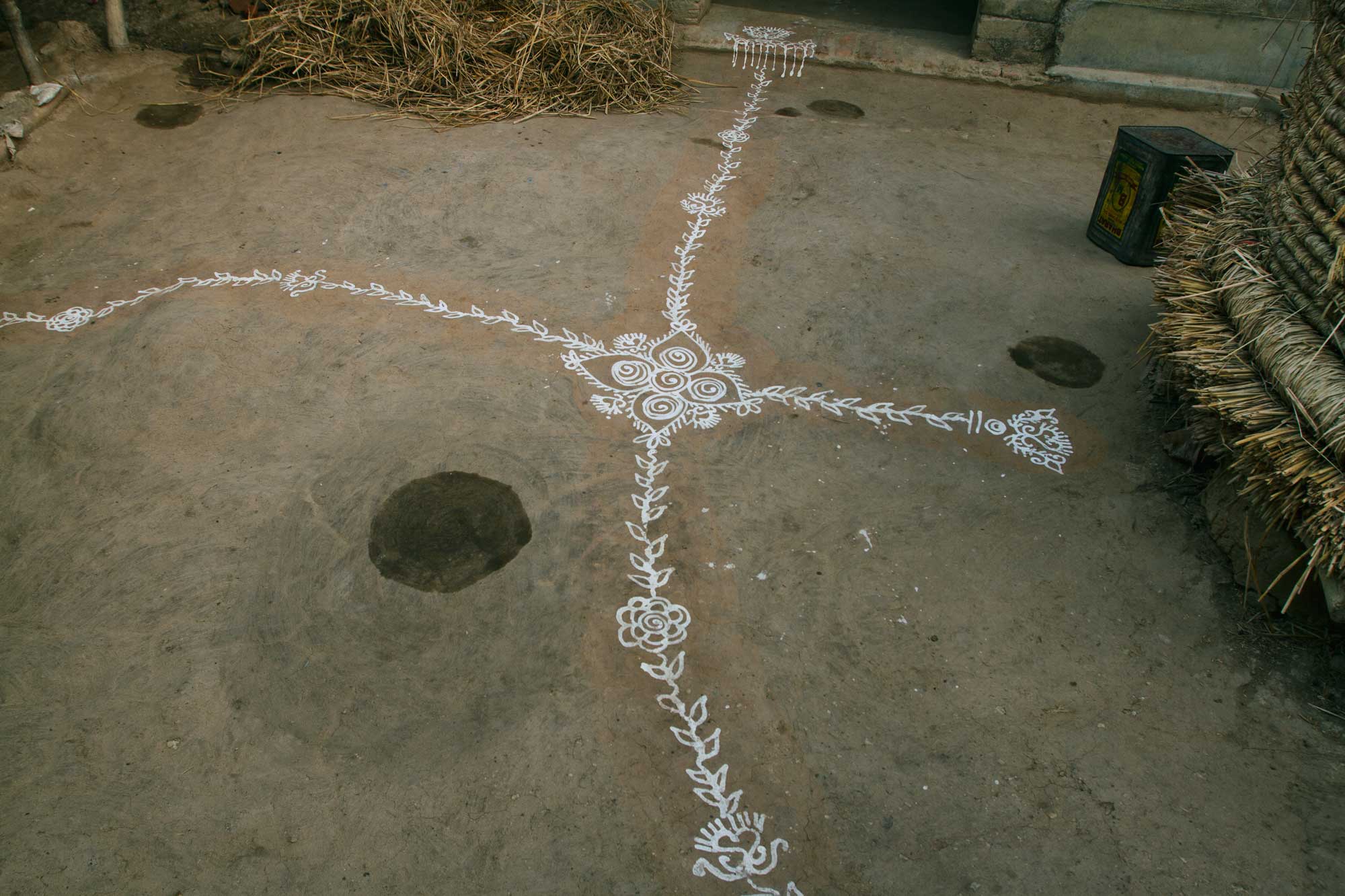
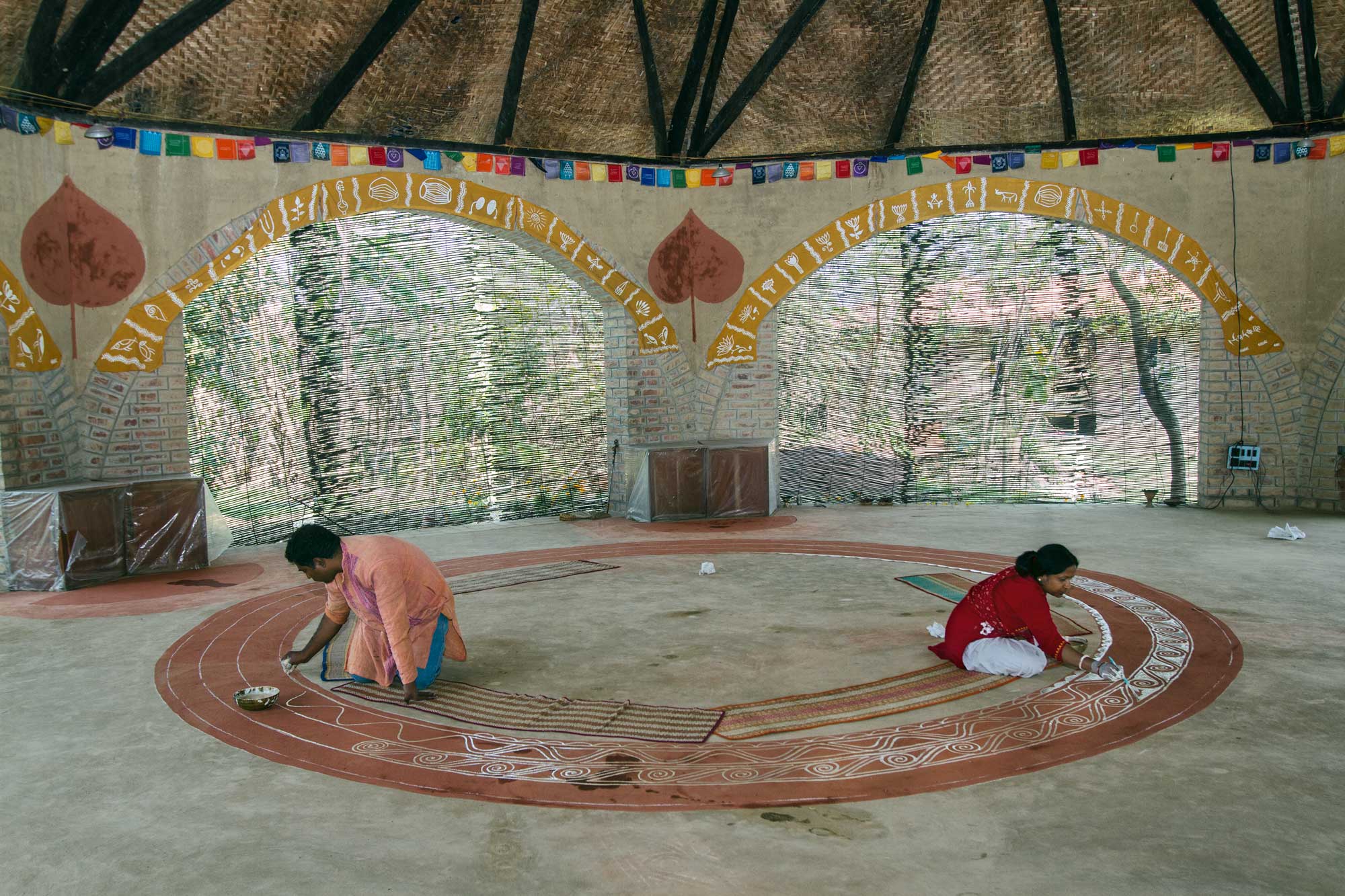
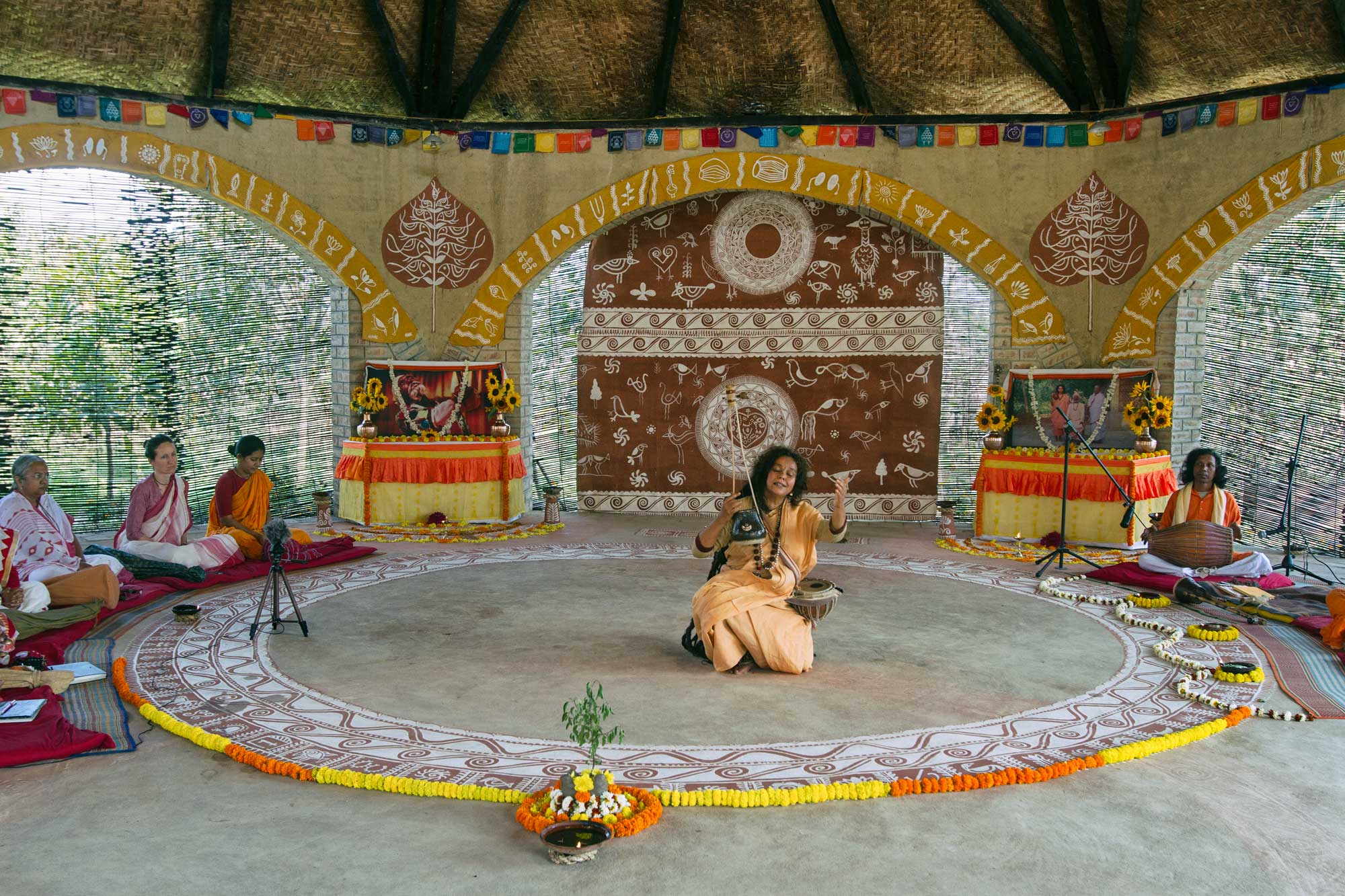
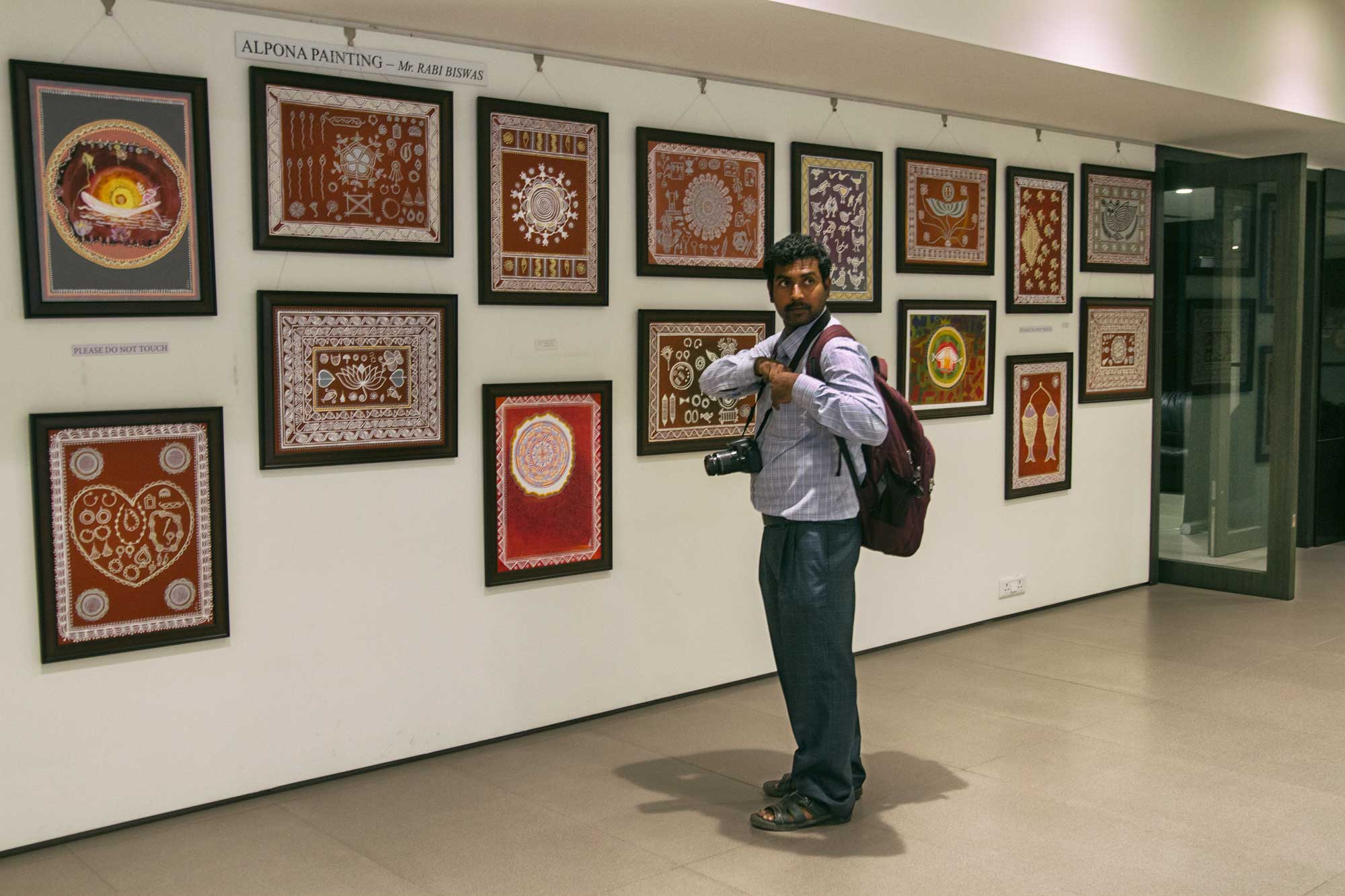









Many scholars have identified alpana associated with vows and worship in pre-Aryan India. It is quite true that Alpana has become a part of Bengali culture. Alpana practice is widespread not only in Hindu but also in Muslim majority Bangladesh.
Dada Congratulations… Great Job and Great Contribution to Alpona Artists.
Very nice article on one of the fading art of Bengal. Supporting pictures are also very much pleasing. Do explore more on such subjects and make documentation for the future generations. Good work. Keep ti up.